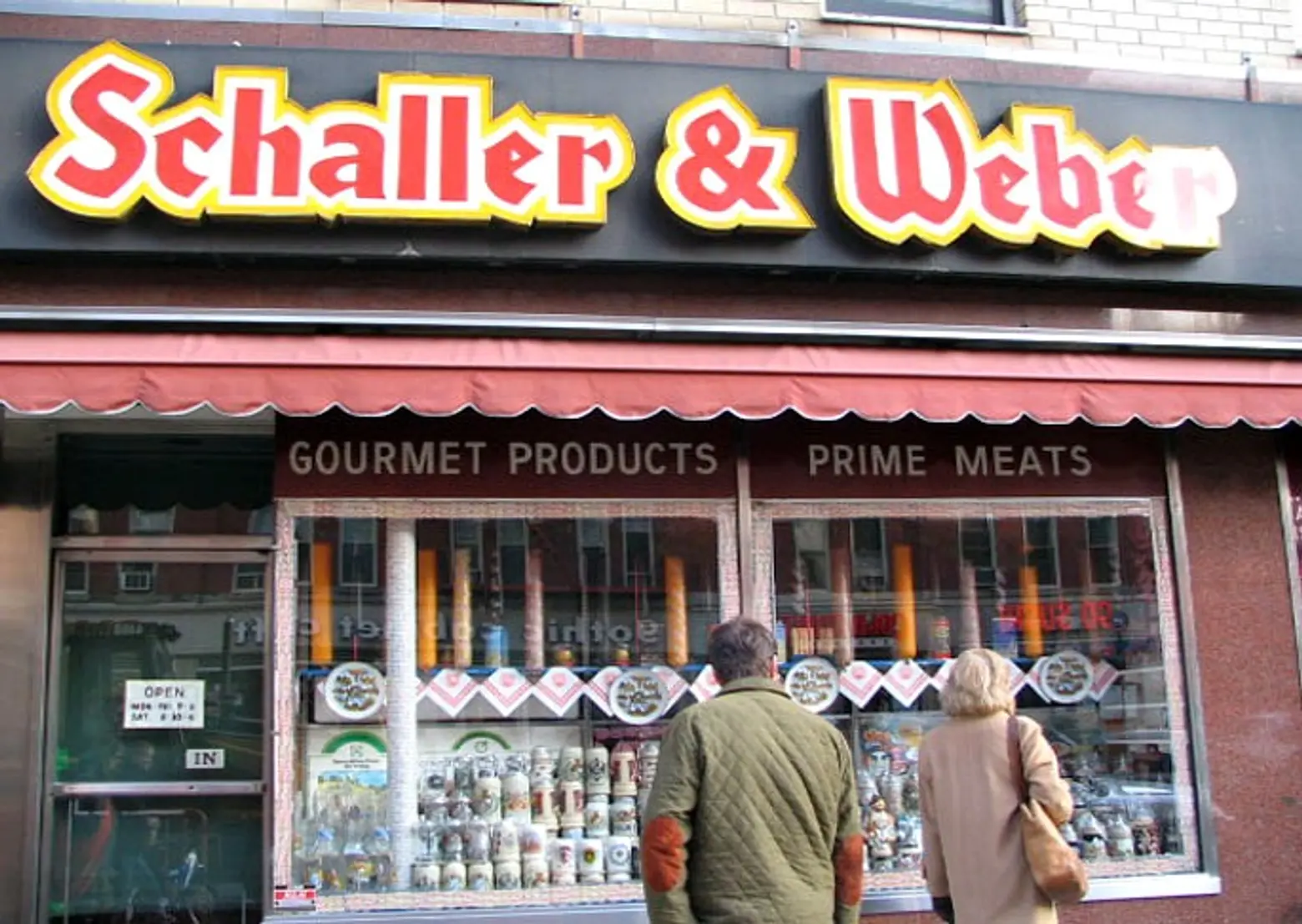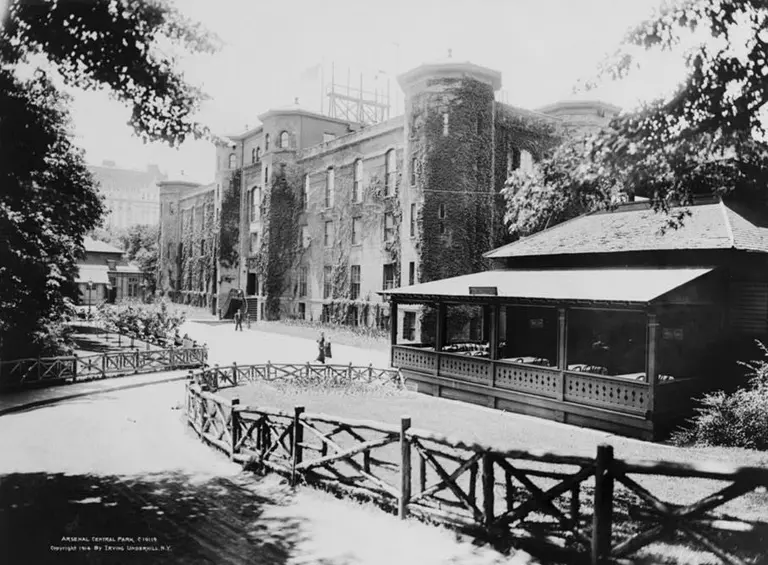Germantown NYC: Uncovering the German History of Yorkville
If you read 6sqft’s post about Kleindeutschland, or “Little Germany,” you know that in 1885 New York had the third largest German-speaking population in the world, outside of Vienna and Berlin, and the majority of those immigrants settled in what is today the heart of the East Village. You also know that the horrific General Slocum disaster in 1904 pushed the last of the Germans out of the area. And as promised, we’re here to tell you where that community went– Yorkville, then commonly known as Germantown.
The Upper East Side neighborhood, bounded by 79th and 96th streets and running from the east side of Third Avenue to the East River, exploded with immigrants from the former Prussian Empire in the early 20th century. Those looking for a fresh start after the tragedy saw opportunity in the many available jobs in Yorkville. Like the East Village, Yorkville still has many reminders of its German past, as well as still-thriving cultural spots.
Immigrants who took up residence in the neighborhood were not just German, but were from Hungary, Austria, Czechoslovakia, Poland, and Russia as well. By 1938, the German-language New Yorker Staats Zeitung newspaper was selling 80,000 copies a day.
The name of York Avenue, and thereby Yorkville, has German roots. In 1928, what was then still called Avenue A, was renamed York Avenue in honor of U.S. Army Sergeant Alvin York, who led an attack on a German machine gun nest during World War I’s Meuse-Argonne Offensive and received the medal of honor for these actions.
86th Street, still the main artery of the Upper East Side today, was the heart of Germantown in Yorkville. It was home to many Vereines, the word for social clubs and singing societies. In fact, the thoroughfare was often called Sauerkraut Boulevard, the German Broadway, or the German Boulevard. Businesses that lined the street included Maxi’s Brauhaus, the Lorelei dance hall, Kleine Konditorei, Cafe Geiger, and Cafe Wienecke.
One of the most popular spots on 86th Street was the Yorkville Casino. Not a casino like we think of today, it was a social center for the German community. It was erected in 1904 at 210 East 86th Street by the Musician’s Mutual Protective Union (the precursor to the American Federation of Musicians). One of its two main ballrooms, the Tuxedo, had more than 15,000 square feet of floor space and was one of the most popular nightclubs in the city. The casino then welcomed the Deutsches Theatre, which was the only movie theater in the city to show German-language films.
 Carl Schurz Park via CityRealty
Carl Schurz Park via CityRealty
Carl Schurz Park also derives its name from German history. The park was designated as the East River Park in 1876, when it housed John Jacob Astor’s villa and was used as a picnic ground. In 1891, the land was acquired by the city and they enlisted Calvert Vaux (of Central Park fame) and Samuel Parsons to undertake the landscape design. Their vision was completed in 1902, several years after Vaux’s death, but was reconstructed in 1935 by Robert Moses to accommodate the FDR Drive.
The park’s name was officially changed to Carl Schurz Park in 1910, in honor of the 13th United States Secretary of the Interior. Born in 1829, Carl Schurz was also a German revolutionary, American reformer, U.S. minister to Spain, Union Army General in the Civil War, and the first German-born American elected to the U.S. Senate. His wife Margarethe Schurz is known for helping to establish the kindergarten system in the United States. After leaving the Interior Department in 1881, Schurz moved to New York City, where he resided until his death in 1906.
 Zion St. Mark’s Evangelical Lutheran Church
Zion St. Mark’s Evangelical Lutheran Church
Most of those who perished in the General Slocum disaster were members of the German Evangelical Lutheran Church of St. Mark at 323 East 6th Street. In 1946, the parish merged with the Zion Church at 339-341 East 84th Street to become Zion St. Mark’s Evangelical Lutheran Church. The neo-gothic building was constructed in 1888, becoming the German Lutheran Zion Church in 1892. The merged parish still hosts a Sunday mass in German today.
During the 1930’s, Yorkville was the New York City base of the German American Bund, the notorious pro-Nazi group. A decade later, in the 1940’s, refugees from fascist Germany sought refuge in Germantown, as did those from communist regimes in the 1950’s and 60’s.
The Third Avenue El was torn down in the 1950’s, an event that spurred many Germans to move out of the area, as small shops and brownstones were torn down for high-rise condos and big-box stores. Anti-German feelings after World War II, which caused many German-Americans to anglicize their names, also aided in the neighborhood shift. But several German establishments are still thriving today in Yorkville.
The neighborhood continues to host the annual Steuben Parade, a large German-American celebration. It was named for Friedrich Wilhelm von Steuben, a Prussian-born General who served under General George Washington in the American Revolutionary War and trained young American troops. Other Germantown holdouts include Schaller & Weber grocery, Heidelberg restaurant, and Glaser’s Bakery.
[Related: Kleindeutschland: The History of the East Village’s Little Germany]
Interested in similar content?
Leave a reply
Your email address will not be published.

































I really enjoyed the article.
What no mention of the Cafe Hindenburg
Very interesting article about NYC
Is there going to be music entertainment and food on the 21 st September 2024 German paray
Is there entertainment on the 21st the day of the German Parade
So interesting to know my grandparents immigrated and lived at East 83rd in the German area during the teens, twenties, and thirties.